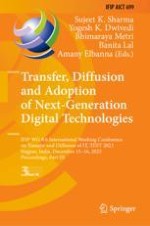2024 | Book
Transfer, Diffusion and Adoption of Next-Generation Digital Technologies
IFIP WG 8.6 International Working Conference on Transfer and Diffusion of IT, TDIT 2023, Nagpur, India, December 15–16, 2023, Proceedings, Part III
Editors: Sujeet K. Sharma, Yogesh K. Dwivedi, Bhimaraya Metri, Banita Lal, Amany Elbanna
Publisher: Springer Nature Switzerland
Book Series : IFIP Advances in Information and Communication Technology
